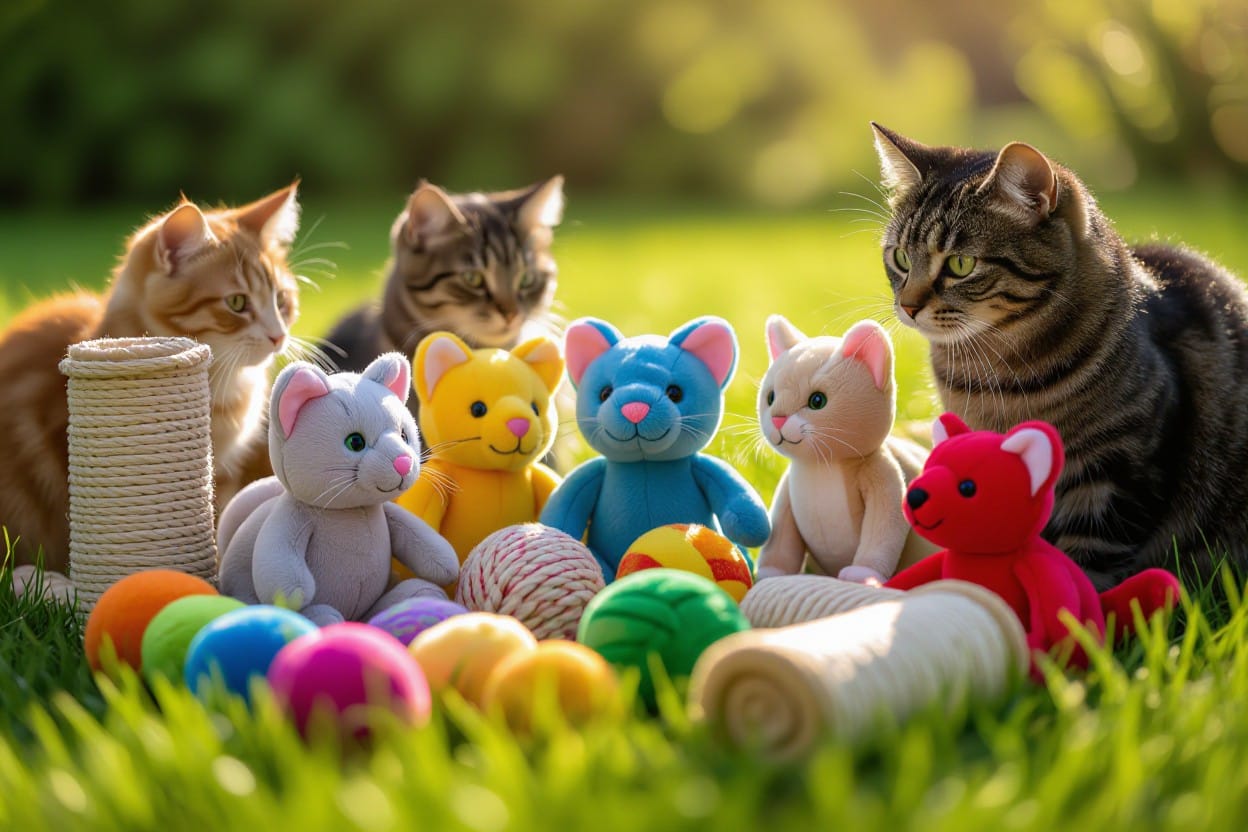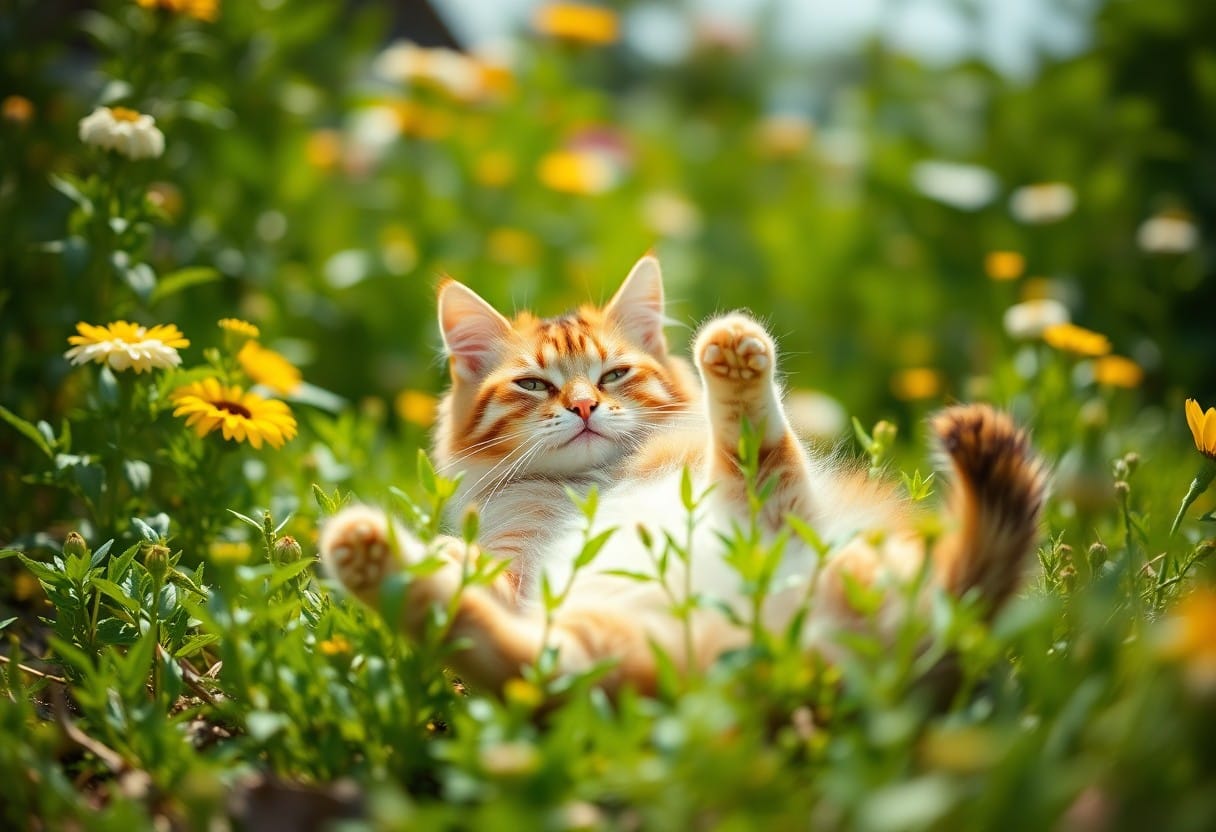Just like kids with their favorite toys, cats go crazy for catnip toys! But what exactly is catnip, and why do our feline friends love it so much? In this comprehensive guide, we will explore everything you need to know about catnip toys and how they can benefit your cat’s well-being. From the science behind catnip’s effects to the best types of catnip toys available on the market, we’ve got you covered with all the necessary information.


Understanding Catnip
The catnip plant, also known as Nepeta cataria, produces a volatile oil called nepetalactone that triggers a unique and often playful reaction in cats. This herbaceous plant, a member of the mint family, is native to Europe and Asia but can now be found growing all over the world. Cat owners often wonder what makes catnip so irresistible to their feline friends.
The Science Behind the Scent
For cats, the scent of nepetalactone is what drives their reaction to catnip. When a cat sniffs or rubs against catnip, it activates the sensory neurons in their olfactory system, sending signals to the brain. This stimulation leads to behaviors like rolling, rubbing, purring, and even a temporary sense of euphoria. The effects usually wear off after 10 to 15 minutes and may not occur again until a couple of hours later.
Why Do Cats Love Catnip?
Understanding why cats are drawn to catnip involves a genetic component. The response to catnip is hereditary, with around 50-70% of cats being affected by its allure. Kittens and older cats tend to show less interest in catnip than adult cats. This behavior may serve as a form of environmental enrichment, providing mental stimulation and promoting natural behaviors in domestic cats.
Cats have an innate attraction to catnip, and the reactions they exhibit can vary. Some cats become more playful, while others may become more mellow or even exhibit a heightened sense of curiosity. The response to catnip is individual, with each cat having their own unique reaction when exposed to this potent plant.
Types of Catnip Toys
Now, let’s explore the various types of catnip toys available for your feline friend. Catnip toys come in different forms to suit the preferences and play styles of individual cats. From stuffed toys to interactive toys, edible treats, and even DIY options, there is a catnip toy for every kitty out there.
- Stuffed Toys: Stuffed catnip toys are a classic favorite among cats. These toys are typically filled with dried catnip and come in a variety of shapes and sizes. Cats love to bat them around, kick them with their hind legs, and even cuddle up to them for a nap. After all, who can resist the allure of catnip?
- Interactive Toys: Interactive catnip toys are designed to engage your cat’s natural hunting instincts and provide mental stimulation. These toys often incorporate feathers, bells, or other enticing elements to keep your cat entertained for hours. Interactive toys are great for promoting exercise and preventing boredom in indoor cats.
Stuffed Toys
Toys stuffed with catnip are a must-have in your kitty’s toy collection. The scent of catnip is irresistible to most cats, and they will pounce, chase, and play with these toys to their heart’s content. Stuffed catnip toys are also great for encouraging exercise and providing enrichment for your cat’s environment.
Interactive Toys
Any avid cat owner knows the importance of interactive toys in keeping their feline companions happy and healthy. Interactive catnip toys not only provide physical exercise but also mental stimulation for your cat. These toys help satisfy your cat’s natural instincts to hunt and play, keeping them engaged and active throughout the day.
Stuffed catnip toys can also serve as interactive toys when you engage with your cat during playtime. By incorporating these toys into your interactive play sessions, you can strengthen the bond with your cat and provide them with hours of entertainment.
Edible Treats
Stuffed with delicious catnip, edible treats are a tasty way to reward your cat while also providing them with the benefits of catnip. These treats can be used as a special reward during training sessions or simply as a way to spoil your furry friend. Cats love the taste of catnip, making these treats a popular choice among cat owners.
For instance, you can find catnip-flavored snacks in the form of crunchy biscuits, soft chews, or even catnip-infused liquid treats. These edible options allow you to introduce catnip to your cat in a fun and tasty way, adding a new dimension to their playtime and training routines.
DIY Options
Stuffed with homemade catnip blends, DIY catnip toys are a fun and cost-effective way to provide your cat with endless entertainment. You can easily create your own catnip toys using materials like fabric scraps, cotton stuffing, and potent catnip. DIY catnip toys allow you to customize the size and shape of the toy to cater to your cat’s preferences.
Options for DIY catnip toys are endless, from simple catnip-stuffed pouches to intricate handmade toys that will keep your cat engaged and entertained. By making your own catnip toys, you can ensure the quality of the ingredients and create unique toys that your cat will love.
Health and Safety
Is Catnip Safe for All Cats?
Health experts agree that catnip is generally safe for the majority of cats to enjoy. When cats interact with catnip, whether by inhaling its scent or consuming it, they typically experience a sense of euphoria and excitement. However, it’s important to note that not all cats are affected by catnip – sensitivity to it is hereditary, and some cats may not show any interest in it at all. If you’re introducing catnip to your feline friend for the first time, start with a small amount to gauge their reaction.
Recognizing Overstimulation
Recognizing when your cat has had too much catnip is crucial in ensuring their well-being. Signs of overstimulation can include restlessness, excessive meowing, dilated pupils, and even aggression. If you notice any of these symptoms, it’s time to remove the catnip and let your cat calm down in a quiet environment. Ensuring that your cat has access to fresh water during and after their catnip playtime is also imperative to prevent any potential dehydration.
This subsection is significant in promoting responsible catnip use among cat owners. By being aware of the signs of overstimulation and taking appropriate actions, you can ensure that your feline friend stays safe and happy during their playful encounters with catnip.
Using Catnip Responsibly
Frequency of Use
Keep in mind that moderation is key when it comes to using catnip with your feline friend. While catnip is safe and non-addictive, using it too frequently can make your cat less responsive to its effects over time. It’s recommended to give your cat a catnip toy once or twice a week to ensure they continue to enjoy its benefits without developing a tolerance.
Storing Catnip Toys
Catnip toys should be stored in a cool, dry place to maintain their potency. Air-tight containers or resealable bags are great options for keeping catnip toys fresh and potent for longer periods. Additionally, storing catnip toys away from your cat’s reach when not in use can help prolong their lifespan and prevent overexposure.
Catnip toys can lose their effectiveness over time, so it’s important to check them periodically for signs of wear and tear. If a catnip toy becomes damaged or the catnip inside no longer elicits a response from your cat, it’s time to replace it with a fresh toy to keep your feline friend entertained and engaged.

Enhancing Playtime With Catnip Toys
Once again, catnip toys prove to be a fantastic way to enhance playtime for your feline friend. Not only are these toys entertaining and enjoyable for cats, but they also offer a range of benefits that can improve their overall well-being. From training and bonding to mental and physical stimulation, catnip toys are a must-have in any cat owner’s arsenal.
Training and Bonding with Catnip Toys
Toys infused with catnip can be a valuable tool for training your cat and strengthening the bond between you. By using catnip toys during playtime, you can reinforce positive behaviors and encourage your cat to engage in interactive activities. This not only helps with their physical health but also fosters a closer relationship between you and your furry companion.
Mental and Physical Stimulation Benefits
Mental stimulation is crucial for a cat’s overall well-being, and catnip toys can provide just that. These toys engage your cat’s senses and stimulate their natural hunting instincts, keeping them mentally sharp and active. Additionally, the physical activity involved in playing with catnip toys helps keep your cat physically fit and active, reducing the risk of obesity and related health issues.
Alternatives to Catnip
Your feline friend may not respond to catnip, or you may want to provide some variety in their playtime. Luckily, there are a few alternatives to catnip that can excite and entertain your cat just as much.
Silver Vine
For those cats who don’t react to catnip, silver vine can be a great alternative. Also known as matatabi, silver vine has been found to elicit similar reactions in cats, such as rolling, rubbing, and increased playfulness. It contains actinidine, a compound that triggers a euphoric response in many felines, making it a popular choice for cat toys and treats.
Valerian Root
Any cat owner looking for a natural way to stimulate their pet’s senses may want to consider valerian root. This herb has a strong, enticing smell that can attract cats and induce a playful mood. Valerian root has been used for centuries to promote relaxation and reduce stress in both humans and animals, making it a great option for playtime enrichment.
Valerian root is safe for cats to interact with, but be aware that some cats can become quite excited or even aggressive when exposed to its scent. It’s a good idea to observe your cat’s behavior and limit their interaction with valerian root if they become overly stimulated.
Tatarian Honeysuckle
Silver vine is an excellent alternative to catnip, especially for cats who do not respond to catnip’s effects. Tatarian honeysuckle is another great option to consider. This plant contains nepetalactone, a compound similar to the one found in catnip, which can attract and excite cats.
With its fragrant aroma and potent effects on cats, Tatarian honeysuckle is often used in cat toys and scratching posts to provide enrichment and entertainment. Some cat owners find that their pets prefer Tatarian honeysuckle over catnip, making it a versatile choice for feline stimulation.
Understanding
It’s crucial to understand that not all cats will respond to catnip, and that’s completely normal. By exploring alternatives such as silver vine, valerian root, and Tatarian honeysuckle, you can cater to your cat’s individual preferences and provide them with a fun and engaging playtime experience.
Conclusion
On the whole, catnip toys are a popular choice for pet owners looking to provide their feline friends with enrichment and entertainment. Understanding the effects of catnip on cats, the different types of catnip toys available, and how to incorporate them into playtime can help create a stimulating environment for your cat. Remember to always supervise your cat while playing with catnip toys and to consult with your veterinarian if you have any concerns about your cat’s behavior or reaction to catnip.
By following the information and tips provided in this guide, you can confidently introduce catnip toys into your cat’s play routine and provide them with hours of fun and mental stimulation. Catnip toys can be a valuable addition to your cat’s toy collection and can help strengthen the bond between you and your furry companion.
FAQ
Q: What is catnip?
A: Catnip is a herb from the mint family that contains a compound called nepetalactone, which can trigger a euphoric response in many cats.
Q: How do catnip toys work?
A: Catnip toys are usually filled with dried catnip leaves or pellets. When a cat plays with or chews on the toy, the scent of catnip is released, stimulating the cat’s senses.
Q: Are all cats affected by catnip?
A: Not all cats are responsive to catnip. It is estimated that about 50-70% of cats have a genetic sensitivity to catnip, while others may not react at all.
Q: Are catnip toys safe for cats?
A: Catnip is non-addictive and generally safe for cats to enjoy in moderation. However, excessive exposure to catnip can cause temporary behavioral changes in some cats.
Q: How often should I give catnip toys to my cat?
A: It is recommended to limit a cat’s exposure to catnip toys to a few times a week to prevent desensitization. Rotate different toys to keep the experience novel and exciting for your feline friend.















